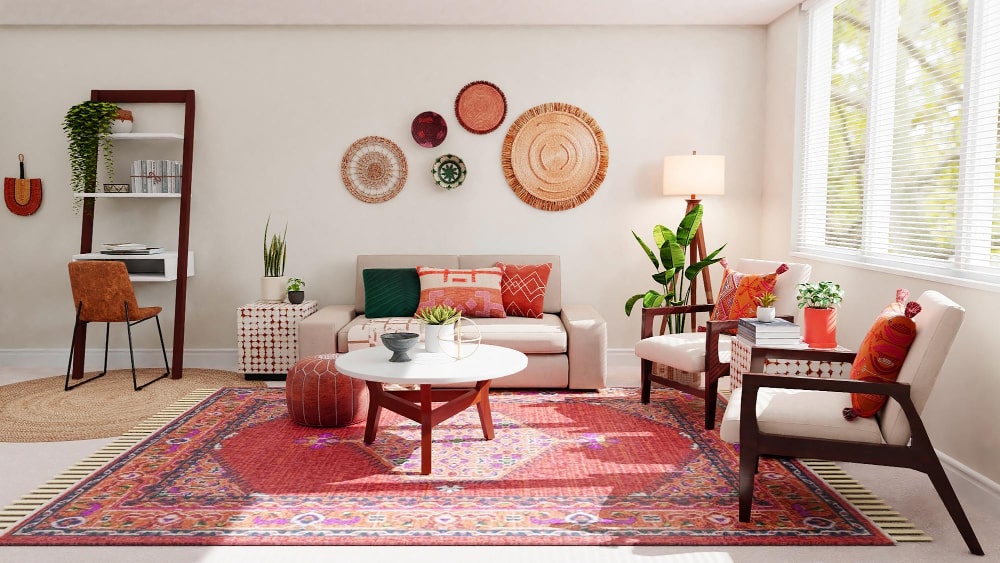Premier interior design firms deliver exceptional design solutions.
Premier interior design firms deliver exceptional design solutions.
Blog Article
Change Your Home With Vital Concepts of Inside Layout and Appearances
The art of changing your home via the vital concepts of interior decoration and appearance needs a thoughtful strategy that integrates shade, equilibrium, and spatial recognition. By recognizing the influence of color theory and the significance of texture and patterns, one can create spaces that are not just aesthetically appealing but also deeply individual. Attaining this stability entails greater than mere decoration; it encompasses a tactical plan and a keen understanding of how each aspect engages within an area. As we explore these foundational principles, consider how they might redefine your understanding of home and individual expression.
Understanding Shade Theory
Understanding the concepts of color theory permits developers to create areas that reverberate mentally with occupants while fulfilling functional demands. Each group plays an essential role in establishing harmony within an area.
The emotional effect of shades is profound; warm colors such as reds and oranges stimulate power and warmth, while amazing tones like blues and environment-friendlies promote calmness and serenity. The use of complementary colors enhances visual rate of interest, producing striking contrasts that can elevate a space's charm.
Neutral shades, on the other hand, serve as a versatile backdrop, enabling various other style aspects to radiate. It is necessary to consider elements such as illumination and the space's function when choosing a color palette, as these can change the assumption of shades throughout the day.
Eventually, a well-considered color pattern can transform a space, cultivating a feeling of convenience and style that aligns with the residents' preferences. Mastery of shade theory is, for that reason, an important skill for any kind of indoor developer intending to develop harmonious and inviting environments.
Attaining Equilibrium in Layout
How can developers accomplish a feeling of equilibrium in their areas? Accomplishing balance in layout is fundamental to developing harmonious interiors.
Asymmetrical equilibrium, on the other hand, counts on varying components that still accomplish a natural look. This approach enables for even more dynamic and casual arrangements, giving interest while maintaining balance. By thoroughly picking varying dimensions, colors, and textures, developers can develop a visually engaging room that feels balanced yet energetic.
Radial balance emphasizes a main focal point with elements emitting external. This style is typically seen in circular designs, where furnishings and decoration develop a natural surround that attracts the eye inward.
Ultimately, accomplishing equilibrium needs thoughtful factor to consider of range, proportion, and the connections in between components. interior design firms. By masterfully applying these balance principles, designers can transform areas right into atmospheres that feel both visually pleasing and functionally harmonious, enhancing the total experience for occupants
Relevance of Spatial Understanding

A keen feeling of spatial understanding enables developers to determine prime focus within a room, guiding the visitor's interest to key features while preserving an overall feeling of unity. It likewise assists in the calculated positioning of illumination, which can dramatically affect the assumption of space and mood. Comprehending spatial relationships enables the designer to provide try here to the specific requirements of occupants, ensuring that each area serves its intended objective without jeopardizing aesthetics.
Ultimately, spatial understanding is vital for making the most of the possibility of any type of indoor room. By meticulously thinking about the interplay in between measurements, format, and feature, designers can produce settings that not just satisfy practical demands but also evoke a feeling of convenience and appeal, boosting the general living experience.
Incorporating Structure and Patterns
Embracing a varied variety of structures and patterns can substantially boost the visual and responsive appeal of an interior area. The calculated use of different materials-- such as timber, metal, fabric, and stone-- produces deepness and passion, making a room feel much more welcoming and vibrant. For instance, incorporating smooth surfaces with harsh structures can develop an equilibrium that attracts the eye and involves the detects.
When integrating patterns, consider both scale and repetition. Large patterns can act as prime focus, while smaller, subtle styles can complement various other elements without overwhelming the area. Layering patterns, such as pairing floral pillows with candy striped throws, adds complexity and a feeling of harmony if carried out thoughtfully.
It is additionally essential to maintain a natural color palette, guaranteeing that structures and patterns collaborate instead of complete for interest. By picking a couple of key textures and patterns, you can develop a merged aesthetic that shows your individual design while enhancing the total ambiance of the room. Ultimately, the cautious consolidation of these components can change a mundane room into a sophisticated setting rich with character and heat.
Individualizing Your Room
Developing a room that shows your character is important to accomplishing a have a peek at this website really inviting environment. Personalization in indoor style enables you to infuse your unique style and interests into your home, changing it from a simple sanctuary into a shelter that talks with who you are. Begin by choosing a shade palette that reverberates with your feelings-- bold hues can energize, while soft tones use harmony.
Incorporate artwork and style that mirror your enthusiasms, whether it be traveling, nature, or abstract concepts. Presenting individual collections, such as publications, pictures, or keepsakes, can evoke valued memories and develop centerpieces within an area. Additionally, think about tailoring useful items, like upholstered furniture, to line up with your visual choices.

Verdict
Finally, the change of a home through the crucial principles of indoor design and aesthetics requires a detailed understanding of shade theory, balance, spatial awareness, appearance, and customization. Each element adds significantly to creating a harmonious and practical living setting - Architecture Firm. By attentively integrating these principles, individuals can enhance the aesthetic charm and emotional vibration of their rooms, inevitably cultivating a home that reflects special identifications while giving comfort and practicality
Report this page